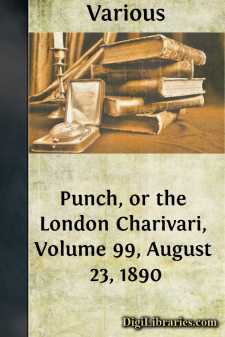Categories
- Antiques & Collectibles 13
- Architecture 36
- Art 48
- Bibles 22
- Biography & Autobiography 816
- Body, Mind & Spirit 145
- Business & Economics 28
- Children's Books 17
- Children's Fiction 14
- Computers 4
- Cooking 94
- Crafts & Hobbies 4
- Drama 346
- Education 58
- Family & Relationships 59
- Fiction 11834
- Foreign Language Study 3
- Games 19
- Gardening 17
- Health & Fitness 34
- History 1378
- House & Home 1
- Humor 147
- Juvenile Fiction 1873
- Juvenile Nonfiction 202
- Language Arts & Disciplines 89
- Law 16
- Literary Collections 686
- Literary Criticism 179
- Mathematics 13
- Medical 41
- Music 40
- Nature 179
- Non-Classifiable 1768
- Performing Arts 7
- Periodicals 1453
- Philosophy 66
- Photography 2
- Poetry 897
- Political Science 203
- Psychology 45
- Reference 154
- Religion 516
- Science 126
- Self-Help 85
- Social Science 82
- Sports & Recreation 34
- Study Aids 3
- Technology & Engineering 59
- Transportation 23
- Travel 463
- True Crime 29
Our website is made possible by displaying online advertisements to our visitors.
Please consider supporting us by disabling your ad blocker.
The New Gresham Encyclopedia. Vol. 1 Part 2 Amiel to Atrauli
by: Various
Description:
Excerpt
CONSONANTS
Of the consonants, b, d, f, h, j, k, l, m, n, ng, p, sh, t, v, z, always have their common English sounds, when used to transliterate foreign words. The letter c is not used by itself in re-writing for pronunciation, s or k being used instead. The only consonantal symbols, therefore, that require explanation are the following:—
ch is always as in rich.
d, nearly as th in this = Sp. d in Madrid, &c.
g is always hard, as in go.
h represents the guttural in Scotch loch, Ger. nach, also other similar gutturals.
nÃâ¢, Fr. nasal n as in bon.
r represents both English r, and r in foreign words, which is generally much more strongly trilled.
s, always as in so.
th, as th in thin.
th, as th in this.
w always consonantal, as in we.
x = ks, which are used instead.
y always consonantal, as in yea (Fr. ligne would be re-written lÃâny).
zh, as s in pleasure = Fr. j.
Amiel´, Henri Frédéric, French-Swiss philosophical writer and poet, born at Geneva, 1821, died there 1881. Educated at Geneva, he resided a considerable time abroad, especially in Germany, and was much influenced by German thought and science. On his return he first held the chair of æsthetics, and then that of philosophy. He published several volumes of poetry as well as other works, but he is best known by his Journal Intime, published after his death, and translated into English (1885), with a critical study by Mrs. Humphry Ward. It shows great critical and philosophical power, but is pessimistic.
Amiens (aÃâ¢-mÃâ-anÃâ¢), a town of France, capital of the department of Somme, on the railway from Boulogne to Paris. It has a citadel, wide and regular streets, and several large open areas; a cathedral, one of the largest and finest Gothic buildings in Europe, founded in 1220 by Bishop Evrard, after designs made by the architect Robert de Luzarches. Having water communication with the sea by the Somme, which is navigable for small vessels, it has a large trade and numerous important manufactures, especially cotton and woollen goods. It was taken by the Germans in 1870, and again in 1914, by General von Kluck. Pop. (1911) 93,207.—The Peace of Amiens, concluded between Great Britain, France, Spain, and the Batavian Republic, 27th March, 1802, put an end for a time to the great war which had lasted since 1793.
Amir. See Emir.
Amirante Islands (aÃâ¢-mÃâ-raÃâ¢n´tÃÂ), a group of eleven small islands in the Indian Ocean, lying south-west of the Seychelles, and forming a dependency of Mauritius.
Amlwch (am´löh), a seaport in North Wales, Island of Anglesey. Pop. (1921), 2694 (urb. dist.).
Ammana´ti, Bartolomeo, a sculptor and architect, born at Florence in 1511, died 1592; executed the Leda at Florence, a gigantic Neptune for St. Mark's Place at Venice, a colossal Hercules at Padua, and after the inundation in 1557, which destroyed all the bridges of the Arno, built the celebrated Trinity Bridge at Florence, finished in 1570. He was an imitator of Michael Angelo without his inspiration and genius....












